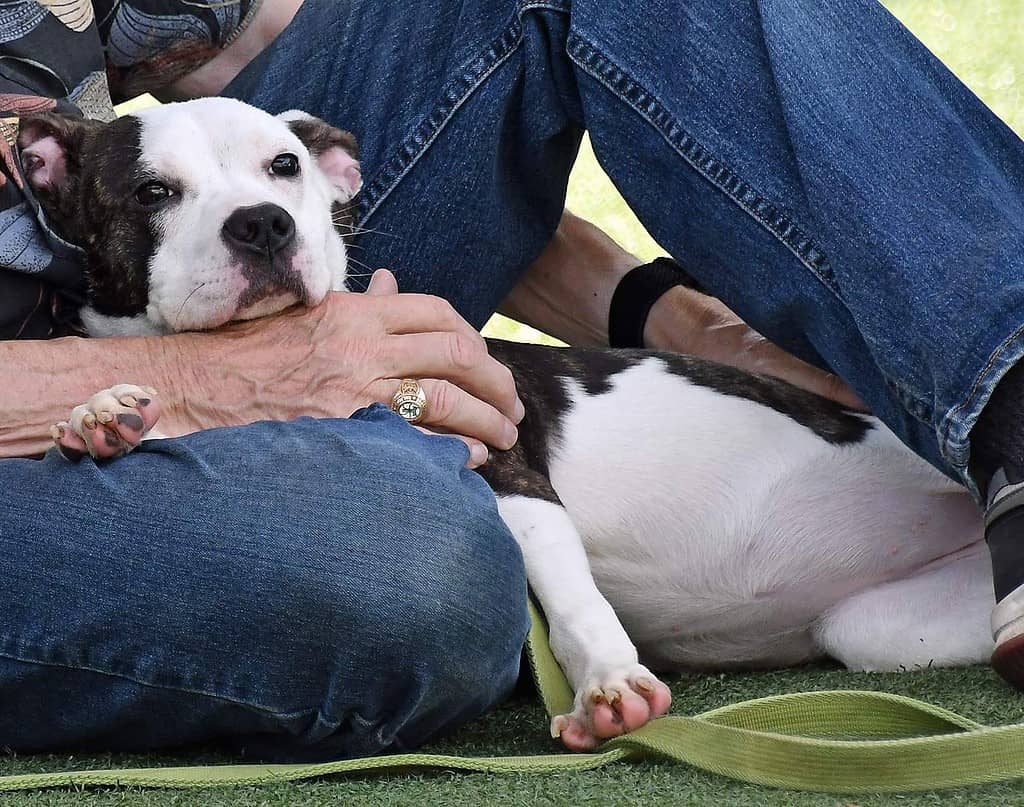People are very satisfied with their newly adopted shelter dogs despite they often don’t behave very well, according to a new study. Researchers surveyed owners for six months after the adoption and found owner satisfaction remained high across the study period, despite dogs continuing to report aggression and training problems.

About two million dogs are adopted from shelters in the US every year. Confinement in a shelter can be very stressful for dogs, leading to behavioral and physiologic issues. It’s a new environment for them, with new scents, sounds, and unfamiliar people. Once adopted, another stressful adjustment period starts, with dynamic behavior changes.
While there are many studies on dog behavior in shelters, there’s not much information on what happens after they are adopted. This is especially problematic as bad canine behavior is listed as the top reason for returns after adoption. Now, researchers at the Ohio State University wanted to address this with a new study.
They surveyed the owners of 99 dogs adopted from five Ohio shelters from October 2020 to May 2021, checking in with owners 7, 30, 90, and 180 days after adoption. Each time, dog owners were asked about behavior problems, such as excitability, aggression, nonsocial fear, chasing, and training difficulty, scoring them from 0-4.
The first survey also asked about fundamental demographic details and whether the person had prior experience as a dog owner. Subsequently, each of the follow-up surveys asked participants about their overall satisfaction regarding their dog’s conduct and any alterations in household circumstances post-adoption they noticed.
“This is one of the most comprehensive studies, using multiple timepoints, to investigate post-adoption behavior in dogs. The findings help shelters counsel new dog guardians with more accurate information on what behavior changes to expect after adoption,” the researchers wrote in their paper in the journal PLOS ONE.
Adopted shelter dogs get more aggressive with strangers
In the study, owners reported an increase from the initial survey in aggression directed to strangers at every subsequent check-in. It went from being reported in 62% of dogs at 10 days to 77% of dogs at 180 days. As dogs get more comfortable in their household, the protective and territorial behavior likely increased, the researchers argued.
Over the six months, the owners reported more excitability, training difficulty, touch sensitivity, and chasing behavior when compared to the baseline. Reports of attention-seeking behavior and attachment decreased, as dogs became assured that their owners would return home. Also, seven people returned their dogs during the study.
While the responses suggested increases in undesirable behavior, in the final survey 100% of the responding owners said their dog had adapted to their new home extremely or moderately well. Also, 94% rated their dog’s behavior as excellent or good, and the rest as fair. About 75% of the owners said their dog’s behavior improved over time.
However, “given the small magnitude of improvement in separation- related problems, this is unlikely,” the researchers wrote. “Some behaviors are more easily avoidable or tolerable depending on the household. Behaviors such as chasing small wild animals is a normal behavior in dogs that owners may not perceive as a significant problem for the household or dog.”
The study has some limitations, the researchers said, including geographical bias (just five shelters). There’s also likely sampling bias, as owners who are more pleased with their dog’s behavior are more likely to take the time to complete the questionnaire. There were also more female owners participating in the study than males.
Kyle Bohland, study author, told ZME Science that he hopes the study gives people a realistic look at how pets’ behavior may change over time. It usually takes months for dogs to show their “true colors,” which can be both good and bad. Bohland is also hopeful that shelters can use this data to provide targeted interventions for people who report behavior problems.









